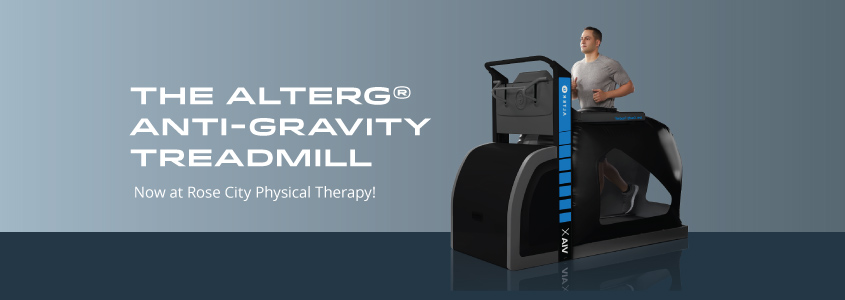The term anti-gravity can lead to thoughts of space. Dr. Robert Whalen, a NASA engineer worked to develop technology to help astronauts exercise in space to counteract the effects which lead to bone and muscle loss. His son Sean looked to create anti-gravity on earth, leading to the concept of the anti-gravity treadmill in 2005, which uses air to lift or off-load the user’s body weight. Initially, the treadmill was used by Olympic runners, the NBA, the NFL, and at universities for their athlete’s rehabilitation and performance training. Now, it is found in physical therapy clinics for rehabilitation for patients that would benefit from decreasing body weight on their bones, joints and soft tissues.
Article Originally Featured on US News | Images Courtesy of Listopedia
How to foil a common but preventable injury.
“It is very common for women — four to eight times more common than it is for men — to tear their ACL,” says sports medicine expert and orthopaedic surgeon Miho Tanaka, M.D., director of the Women’s Sports Medicine program at John’s Hopkins, “But we also know that 70 percent of ACL injuries occur without collisions, meaning there are things women and girls can do to help prevent this type of injury from occurring.”
Noncontact anterior cruciate ligament (ACL) tears and injuries often occur when an athlete goes to pivot or change direction quickly. The knee gives way and the muscles aren’t there to support it, causing the ligament to tear. However, Tanaka notes, “data shows that doing the right exercises can actually help prevent certain knee ligament injuries — like ACL tears — by strengthening the right muscles.”
A female athlete herself and former collegiate triple jumper, Tanaka shares the following tips to help keep women from experiencing an ACL tear:

1. Maintain a center of strength.
You want to strengthen your muscles, not strain them. Many athletes try to push themselves while working out — run one more minute, do one more rep, lift just five more pounds — but doing so can actually cause strained muscles and lead to injury. Instead, Tanaka suggests concentrating on building and maintaining strength across the board during your workouts.
“Having a strong foundation and strength in the muscles that you use in your sport or activity is what will help prevent injury,” she says. For women specifically, this includes building your core muscles and hamstrings — the muscles that run up the back of your thigh — which help prevent against ACL injuries.
2. Stretch for symmetry.
Having balance between the left and right sides of your body is very important in preventing sports injuries. “Studies have shown that even 15 percent side-to-side differences in flexibility and strength can increase a female athlete’s risk for injury, so it’s important for them to pay attention to any imbalances while stretching,” Tanaka says.
“This imbalance can cause the body’s center of gravity to shift while landing from a jump and places girls at risk for knee injury. Sometimes athletes think that stretching is boring and don’t pay attention while doing this, but subtle things, such as stretching the right side less than the left, can add up and create an imbalance.”

3. Activate the right muscles during exercises.
“Exercises that build the hamstring are very important for women participating in sports and physical activities to help prevent ACL injuries,” Tanaka says. In general, women have less hamstring strength than men, which leads to an inability to control the knee if it gives out during movement.
When doing landing drills, like jumping squats, for example, women need to get down low enough in their squat to activate their hamstrings and build that strength.
4. Eat a well-balanced diet.
“Nutrition does not equal dieting,” Tanaka says. “Generally women don’t eat enough and end up calorically deficient and/or dehydrated, which leads to fatigue.” When athletes are tired and worn out, they tend to stop concentrating on their form. That’s when an injury is likely to happen. Instead, women should concentrate on drinking enough water and eating a well-balanced diet, including fruits, vegetables, low-fat proteins and whole grains.
Research Shows …Retearing Your ACL
A torn ACL can be career-ending. Studies have shown that once an athlete has torn his or her ACL, the chance of re-tearing it is six times greater. Additionally, once a female athlete has torn hers, she becomes 16 times more likely to tear her ACL in the other knee. This is why it is especially important for female athletes to follow the right steps to prevent an ACL injury from happening.
Lead Photo: Courtesy of B Strong Training System
What is Blood Flow Restriction (BFR) Training?
Whether facing a long surgery such as an ACL reconstruction or rotator cuff repair, or fracture recovery with precautions, or insurance limits and higher out of pocket costs, methods to help assist with strength gains is crucial. Blood Flow Restriction (BFR) training is a technique which creates a hormonal response to trick the body into thinking it is completing high intensity exercise and leading to gains high intensity exercise provides, despite actually utilizing low intensity and lower load based exercise. This is especially important for patients and athletes that have restrictions due to surgery, fractures, soft tissue and bone health, and limited load allowances or tolerances.
How does Blood Flow Restriction Training Work?
Blood flow restriction partially restricts arterial blood flow to your tissue while completing restricting venous flow (return from you tissue to your heart) during exercise. Pneumatic compression cuffs are placed around the upper arm and/or upper thigh and a pump is used to inflate the cuffs to a safe calibrated level of pressure, creating a tourniquet effect. This in turn causes a lack of oxygen for the muscles and stimulates physiologic responses in the body that mimic that of heavy resistance training. Exercise is completed with the cuffs in place. You will find increased intensity and difficulty of exercise with BFR that otherwise would not prove as challenging.
The History of Blood Flow Restriction Training
The technique dates back to 1966 in Japan when Yoshiataki Sato noticed after being in prolonged kneeling, his legs felt similar to how they felt after strength training. In 1973, he had an ankle and knee injury while skiing. He experimented with occlusion training while in a cast. After six weeks, his physicians were impressed with the minimal strength loss, despite the cast. Thereafter, over the years he tested various ways to restrict blood flow until KAATSU was developed in the 1990’s and the first research was published. Occlusion training and use was limited initially to Japan. In the last 20 years, research appeared in Western medical journals after the technique was used in the US Military for recovery post traumatic injury. In the last 10 years, more frequent mainstream use has occurred in sports and physical therapy.
Benefits of Blood Flow Restriction Training
Research shows that strength gains and muscle hypertrophy (growth in size) is significantly greater with BFR training, than with low resistance exercise alone. These gains can occur within weeks, and are similar to high intensity and heavy load resisted exercise. Exercise recommendation is 20-40% of one’s 1-repetition max (RM), higher repetitions, frequent rest breaks, sessions of 20 minutes or less, 2-3 times a week, and for a duration of greater than 3 weeks. Blood Flow Restriction can also be added to aerobic exercise such as walking and cycling with research showing carryover for improved function for daily activity, aerobic capacity, and health. There are some limits due to the comfort of wearing the bands during cardiovascular exercise. Other promising benefits include pain control, bone healing, increased bone density, accelerated tendon injury recovery, and a complement after Platelet-rich Plasma (PRP) and Stem cell regenerative injections.
An understandable concern is safety. Research actually reports decreased deep vein thrombosis (DVT) risk and lower hypertensive response with exercise. Muscle damage can occur without the use of proper equipment as well, as not following instructions. The technique is not recommended for those who are pregnant and requires surgeon approval post-operatively and post fracture, and for cardiovascular medical conditions.
Is Blood Flow Restriction Training Right for Me?
To summarize, BFR training provides another tool for physical therapy treatment to increase strength gains sooner and with less load on injured tissue or during post-operative precautions. Some of the exciting uses include post-operative rehab, fracture management recovery, athletes cross-training, load management, for the elderly, and for those with arthritis. Safe use requires medical guidance and adherence to established compressive loads applied to the cuffs. If your physical therapist and physician adds BFR training to your plan of care, expect to work hard, but the reward will be earlier increased strength and muscle muscle mass and quicker return to function.

Left: B Strong BFR cuff set up on a patient’s thigh. Right: US Ski Team and Olympian Jacqueline Wiles using B Strong BFR during rehab at Rose City Physical Therapy
The physical therapists at Rose City Physical Therapy have been formally trained in Blow Flow Restriction using the B-Strong BFR Training System ™ co-developed by sports medicine physician and researcher Dr. Jim Stray-Gundersen, MD.



